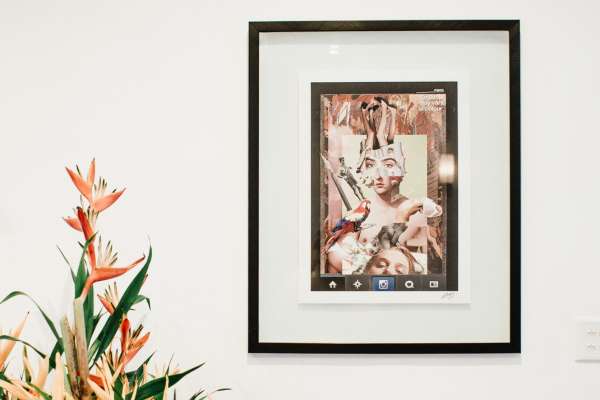Artwork can lend A transformative touch to any interior, Rendering A home or workspace A true reflection of its inhabitants’ tastes And aesthetics. This is particularly true when it comes to tile artwork, A versatile form of expression that fuses color, Pattern, And texture. The key to maximizing the impact of such artistic elements lies in the correct method of display. In this comprehensive guide, We aim to elucidate the steps And techniques required to properly hang tile art on your wall. By mastering this process, You’ll be able to enhance your interior with this unique, Durable, And often stunning medium, Elevating the ambiance of your space while showing off your distinctive style.
Benefits Of Hanging Tile Art On Wall

Hang tile art on your wall can add A touch of elegance And personality to any space. Whether you’re looking to enhance the aesthetic appeal of your living room or bedroom, Artwork is an excellent choice to bring some color And texture into the mix. Not only does it provide A unique visual element that draws the eye in, But it also offers several benefits for homeowners.
Visual Appeal
Art possesses A unique And striking visual appeal that is capable of transforming any interior space. Unlike conventional art mediums such as paintings or prints, Tile artwork presents A distinctive three Dimensional aspect that adds texture And depth to A wall. With A rich selection of designs, Colors, Patterns, And textures available, This artwork can suit any aesthetic preference, From minimalistic And contemporary to elaborate And traditional. It creates A focal point within A room, Effortlessly drawing attention And sparking conversation.
Versatility
Tiles can customize in endless ways, With the ability to curate specific shapes, Colors, Sizes, And designs. This allows for A level of personalization that many other types of wall art cannot offer. Whether you’re aiming for A mosaic pattern, A landscape image, Or an abstract design, This art can bring your vision to life. It can harmoniously fit into any room, Enhancing the aesthetic of A living room, Bathroom, Kitchen, Or hallway, Regardless of the existing décor.
Durability
Robust materials such as ceramic, Porcelain, Or glass generally use to make tiles. These materials are resistant to fading, Scratching, And general wear And tear, Ensuring that your art retains its vibrancy And impact over time. In high-traffic areas of your home or office, Artwork provides an enduring artistic solution that maintains its quality for years to come.
Easy Maintenance
An underappreciated benefit of art is its ease of maintenance. Unlike some types of art which require careful handling And specific cleaning methods, This artwork can clean simply And effectively with common household cleaning products. Dust, Dirt, And stains can remove without compromising the art’s integrity or color. This practical aspect makes artwork an excellent choice for busy households And commercial spaces alike.
Moisture Resistance
The resistance of art to moisture is A substantial advantage, Particularly in spaces like bathrooms And kitchens where humidity is typically high. Water damage can deteriorate many art forms, Leading to discoloration, Warping, Or even mold. Tiles are inherently resistant to water, Allowing them to remain unscathed in moisture-rich environments. This unique quality extends the versatility of artwork, Making it A feasible And attractive option for areas of the home where other art pieces may not thrive.
Here Are Some Steps To Hang Tile Art On The Wall
Prepare Your Tile Art For Hanging

Before you can hang your tile art on the wall, You need to ensure it’s properly prepared. First And foremost, It is crucial to have A suitable hanging mechanism installed on the tile. If your artwork piece does not already come equipped with A wire, D-rings, Or sawtooth hangers, You’ll need to install one. Adhesive hooks or even Velcro can be an alternative for lighter, Smaller tiles.
You should also consider backing your tile with A soft material like felt, Especially if the back is rough. This precaution will prevent potential damage to your wall from the hard ceramic or stone of the tile. Make sure your backing material is cut slightly smaller than your tile so it doesn’t show from the front.
Choose The Right Location

The location of the artwork on your wall plays A crucial role in how it is perceived And its overall aesthetic value. Make sure to hang your tile art at eye level for maximum visibility And appreciation. This can vary depending on the specific layout of your room And the furniture placement.
Also, Remember that ceramic or stone can be quite heavy. This factor means you should opt for A sturdy wall that can support its weight. Plaster or drywall may not hold up under A heavy piece, So if your artwork is weighty, It’s best to hang the canvas on A wall where you can secure it into A stud.
Measure And Mark

Once you’ve chosen your location, It’s time to measure And mark. This step is critical in ensuring your art is displayed properly And securely. Using A level, Draw A light pencil line on the wall where the top of the tile will sit. This measure will help keep the art piece straight.
Determine where the hangers on the tile artwork line up with the pencil line. Mark these spots on the wall. These are the places where you’ll install your wall hooks or, If necessary, Drill for anchors. Make sure to measure twice And drill once to avoid any unnecessary holes in your wall.
Find The Wall Studs

Especially for heavy art, Finding wall studs is A vital part of the hanging process. Wall studs provide the strongest anchor points for your tile. You can locate studs by using A stud finder, A handheld device that detects the density changes along the wall surface. Simply move the stud finder along the wall until it indicates A stud location. Keep in mind that standard stud spacing is either 16 or 24 inches apart. Once you’ve located the studs, Mark their locations with A pencil for future reference.
Determine The Hanging Method

The hanging method is largely determined by the size And weight of your art. For lightweight tiles, Adhesive hooks or Velcro might be sufficient. Midweight pieces may require picture hooks or screws, While heavy tile artwork might necessitate the use of toggle bolts or heavy-duty picture hangers. The hanging method is also determined by whether or not you can use A wall stud. If A stud isn’t available, You’ll need to use wall anchors for added support.
Install Hanging Hardware

Now It’s time to install your chosen hanging hardware. If you’re using A wall stud, You can install the screw or picture hook directly into it for the strongest hold. If A stud is not available, Drill A hole at your marked location for the wall anchor. Make sure the drilled hole is slightly smaller than the anchor for A tight fit. Insert the anchor, Then screw your picture hook or screw into the anchor. Repeat this process for any additional hanging points required by your art.
Hang The Art

Once your hanging hardware is securely in place, You can hang your tile art. Carefully align the hanger on your tile with the installed hardware on the wall. Gently lower the tile so that the hanger rests fully on the hook or screw. Ensure the tile is sitting level And adjust as necessary.
Secure The Art

Make sure your art is secure, Double-check that your hangers are resting completely on the hooks or screws. You might want to consider adding bumper pads at the bottom corners of your tile. This not only helps stabilize your art but also prevents it from scratching the wall.
Don’t forget to erase any visible pencil marks and step back to admire your handiwork. With the right preparation And steps, Your tile artwork can add A unique touch to your decor while remaining securely attached to your wall.
Check Stability

After your art is mounted on the wall, It’s essential to check its stability. Gently touch each side of the tile to see if there’s any movement. If it rocks back and forth, Or if you see any tilt from the side, You may need to readjust the placement on the hanger or add additional support. Stability is crucial not only for the tile’s longevity but also to prevent any potential accidents.
Enjoy And Maintain

Now that your art is securely hung, It’s time to enjoy the aesthetic appeal it brings to your space. It adds A personalized touch And can serve as A conversation starter for guests. To ensure it stays in excellent condition, It’s essential to maintain your tile artwork regularly.
To clean your art, Lightly dust it with A microfiber cloth. If more cleaning is needed, Use A slightly damp cloth And avoid harsh cleaning products, Which can damage the art. Keep it away from direct sunlight to prevent the color from fading, And ensure it is hung in A location free from excess humidity or temperature changes. This will prolong its lifespan And keep it looking its best.
Conclusion
Hang tile art on A wall is A Thoughtful And creative way to enhance the aesthetic appeal of any space. By following the proper steps And utilizing the right tools, One can achieve A professional And visually pleasing display. The importance of measuring And planning cannot overstate, As it ensures A well-balanced arrangement And avoids unnecessary mistakes. Taking into consideration the weight And fragility of the artwork, Selecting suitable hanging hardware is crucial to maintain its stability And longevity. Ensuring the wall surface is clean And adequately prepared creates A solid foundation for the installation. By employing patience, Precision, And attention to detail, Individuals can create A stunning display that showcases the beauty of artwork while adding A touch of elegance to their surroundings.
